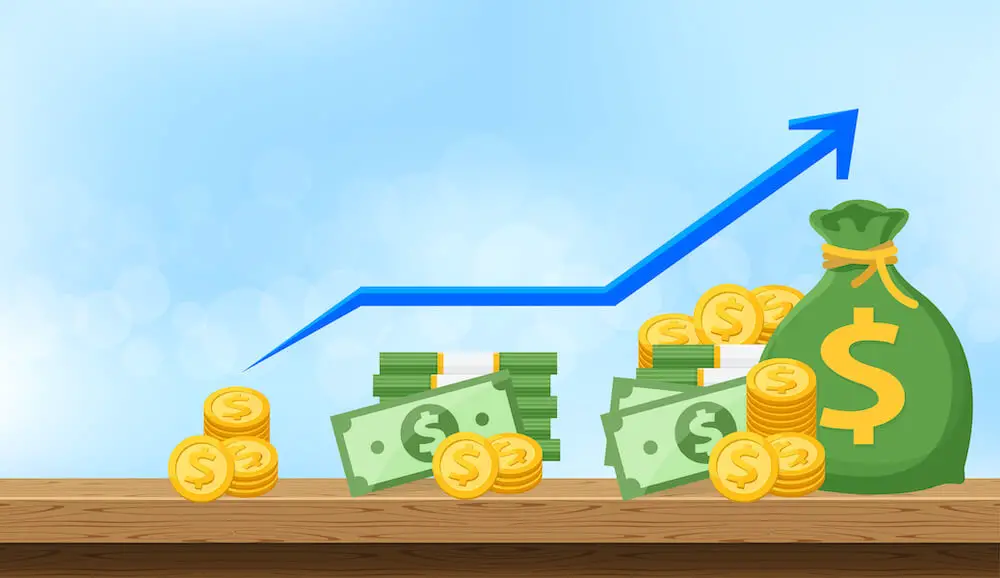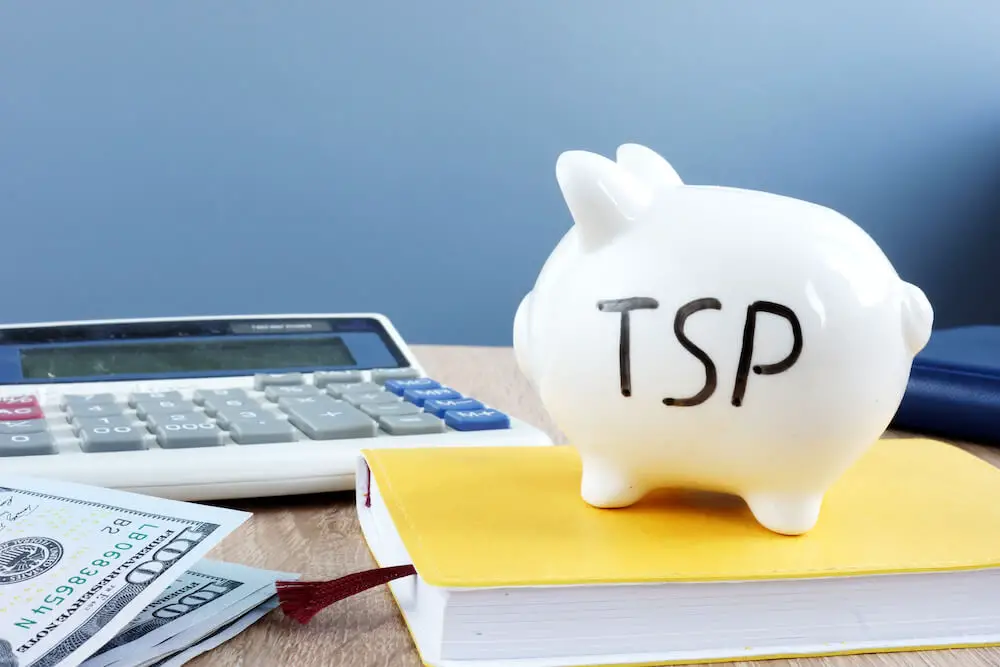The first quarter for 2021 closed for the stock market on March 31st. For the quarter, the S&P 500 index was up 5.8%. The S&P Index is the one on which the C Fund is based in the Thrift Savings Plan (TSP). The C Fund was up 6.17% for the first quarter of this year.
During the first quarter, stock investors were bullish. Stocks are close to an all-time high and, while interest rates went up, they are still historically low. There are several reasons underlying the rise in stock prices including the success of the COVID-19 vaccinations, the Federal Reserve holding down interest rates, and the large increase in the amount of money sitting in the economy with massive government spending.
TSP Winners and Losers in First Quarter
For the month of March, the C Fund came out on top of all of the underlying TSP core funds with a return of 4.38%. The C Fund is also up 56.32% for the past 12 months and up 6.17% for the year-to-date.
The TSP Fund with the best quarterly return was the S Fund with a return of 7.79%. The I Fund was 3rd with 3.52%. The F Fund had the worst return in the first quarter (and for the month of March) with a loss of -3.35%.
For the best 12-month return, check out the S Fund in the chart below. It is up 97.79% for the 12-month period. The second place fund is more than 41% lower: The C Fund with a return of “only” 56.32%.
TSP Investors Seeking Safety and Low Risk
For TSP investors seeking considerable safety in their investments, the G Fund has a year-to-date return of 0.27% and a 12-month return of 0.83%. Compare this rate of return to the L Income Fund with a monthly return of 0.71% and a 12-month return of 11.54%.
While the L Income Fund is considerably ahead of the G Fund, compared to the F Fund, investors did much better in the G and L Income Funds. The F Fund finished at the bottom of the TSP line-up with a loss of -3.35% for the quarter, a loss of -1.23% for the month but it is up 0.77% in the past 12 months.
For those who have not paid attention to the L Income Fund, its investment objective is to achieve a low level of growth but with a high emphasis on preserving assets. It is not a pure bond fund. The assets in the L Income Fund are the G Fund (71.46%), the F Fund (5.79%), the C Fund (11.92%), the S Fund (2.87%) and the I Fund (7.96%). In other words, there is some room for growth with the stock funds that are included but still a very conservative fund. The TSP writes: “It focuses on money preservation while providing a small exposure to the riskier funds (C, S, and I Funds) in order to reduce inflation’s effect on your purchasing power.”
Results for All TSP Funds
| | G Fund | F Fund | C Fund | S Fund | I Fund |
| Month | 0.11% | -1.23% | 4.38% | -0.39% | 2.35% |
| 12 Month | 0.83% | 0.77% | 56.32% | 97.79% | 44.87% |
| YTD | 0.27% | -3.35% | 6.17% | 7.79% | 3.52% |
| | L Income | L 2025 | L 2030 | L 2035 | L 2040 |
| Month | 0.71% | 1.44% | 1.78% | 1.93% | 2.08% |
| 12 Month | 11.54% | n/a | 32.49% | n/a | 39.66% |
| YTD | 1.24% | 2.55% | 3.18% | 3.46% | 3.76% |
| | L 2045 | L 2050 | L 2055 | L 2060 | L 2065 |
| Month | 2.20% | 2.33% | 2.92% | 2.92% | 2.91% |
| 12 Month | n/a | 46.20% | n/a | n/a | n/a |
| YTD | 4.01% | 4.28% | 5.47% | 5.46% | 5.46% |
Get more current and historical TSP performance data at TSPDataCenter.com.
How Safe is the Stock Market Now?
There is a lot of speculation in the stock market now. Wall Street Journal columnist Jason Zweig wrote recently: “This isn’t a bull market or a bear market. It’s a know-nothing market.”
Zweig cites one 22-year old man trading stocks who lost his job as a shoe salesman but had some money. He says he does not know what he is doing with buying or selling stocks.
“I just know I’m making money.” He added that he’d been trading stocks for only three days, but “just like that, made $300 for the day.” In the next few weeks that young man, Danny Tran, racked up roughly 500,000 followers on TikTok.
Zweig obviously does not view this attitude as a good thing for long-term investors. Large groups of people who buy and sell stocks as a result of a comment in a forum on social media are not investors, they are gamblers or speculators hoping to make a quick buck. Some have been very successful—as some gamblers may experience success.
This type of stock buying and selling from large groups of people increases the risk of the market going down and, in the meantime, creating volatility. No one knows, of course, how long the positive returns on stocks will continue. There is a risk in investing in stocks. The risks may be higher now than usual with what some analysts refer to as “frothiness in the market”. Froth refers to stock market conditions preceding an “actual market bubble, where asset prices become detached from their underlying intrinsic values as demand for those assets drives their prices to unsustainable levels.”
Even if there is a stock market bubble now, a market bubble can continue for longer than people expect. It does mean that those who are saving for their future retirement, or who are currently retired, should consider their exposure to stocks. If the market should decline by 10% or 20%, will that person panic and suddenly sell stocks before they go down any more than they already have?
As usual, any long-term investor needs to have a long-term plan and consider their overall financial position in advance of the next market decline (and it always has declines).
How Have TSP Investors Allocated Investments?
Here is a chart detailing how TSP investors have invested their money in the TSP as of February 28, 2021. Notice the allocation to the S Fund which is the best performing TSP Fund over the past 12 months (it is also a more volatile fund because small company stocks tend to be more volatile).
| G Fund | 29.8% |
| F Fund | 3.9% |
| C Fund | 28.4% |
| S Fund | 12.5% |
| I Fund | 3.7% |
| L Funds | 21.8% |
| Total | 100% |
Total assets in the Thrift Savings Plan as of the end of February 2021 were approximately $723.5 billion.





